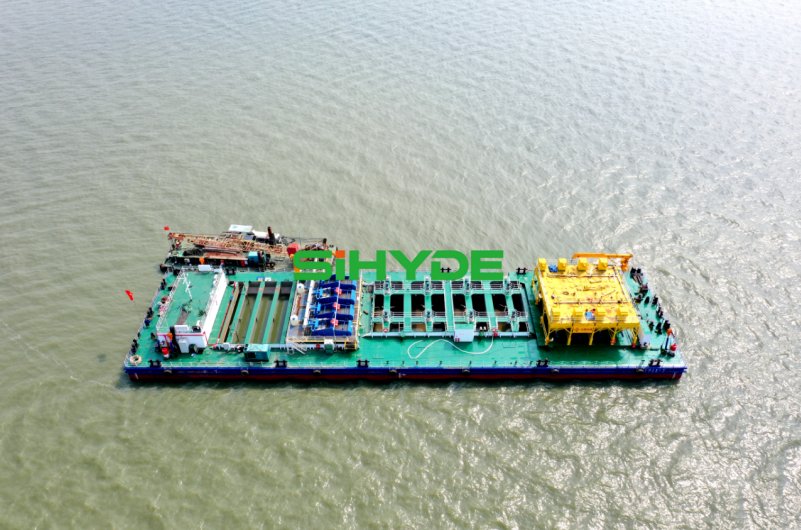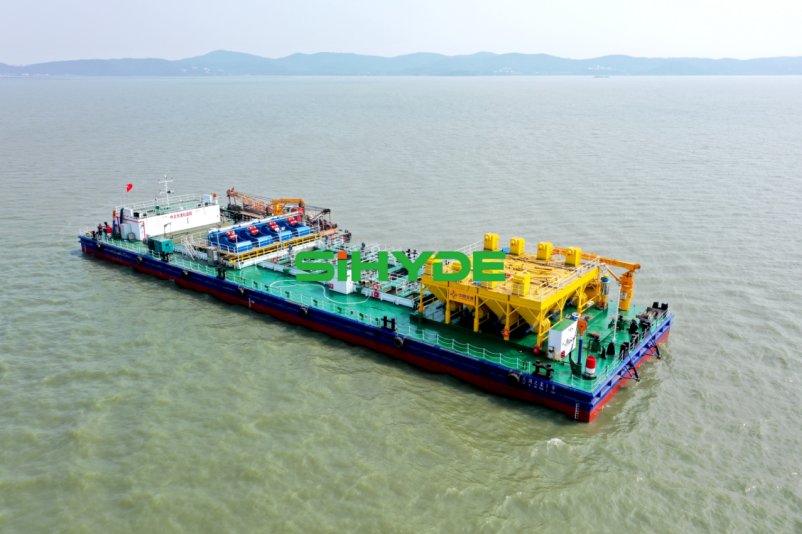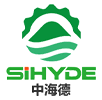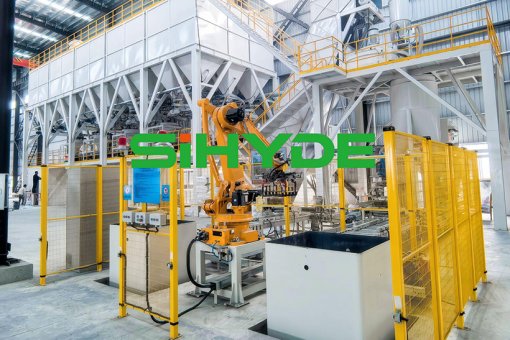National Key Environmental Protection Project Supporting Equipment · Exclusive Ship-Mounted Customized Equipment for Taihu Lake Dredging Flocculant Batching Line
Custom-developed by Qingdao Zhonghaide Automation Equipment Co., Ltd., this flocculant automated production line serves as the core supporting equipment for the national key environmental protection project—the Taihu Lake Ecological Dredging Initiative. It is 100% tailored for "ship deck operation" scenarios.
1. Addressing Ship Height Limitations
Departing from traditional vertical silos, the system employs proprietary "horizontal silos" to significantly reduce overall equipment height. This design perfectly accommodates shipboard height restrictions, fully resolving the critical issues of "equipment exceeding height limits for installation and constrained operations."
2. Overcoming Taihu Lake Weather Challenges
The system features a comprehensive sealed protection mechanism, implementing fully enclosed designs across silo storage, material conveying, and precise batching stages. This effectively isolates interference from lake-surface winds, rain, and moisture, ensuring consistent flocculant activity and material quality throughout the process.
3. Vacuum Feeding System
Seamlessly integrating with external flocculant transport vessels, the system enables secure and efficient inter-ship material transfer. This replaces manual handling, preventing material contamination and simplifying operations.
4. Variable-Frequency Screw Batching System
Allowing flexible configuration and precise adjustment of flocculant delivery based on real-time dredging conditions (such as sludge concentration and dredging depth), the system delivers rapid response times, minimal errors, and adaptability to diverse operational scenarios.
5. Adaptive Continuous Operation System
Designed for shipboard environments with motion-induced vibrations and limited space, the system incorporates anti-shake, compact layouts and stable control mechanisms. This enables 24-hour uninterrupted operation without frequent manual intervention, fully addressing the inconveniences and safety risks associated with manual handling in maritime settings.








